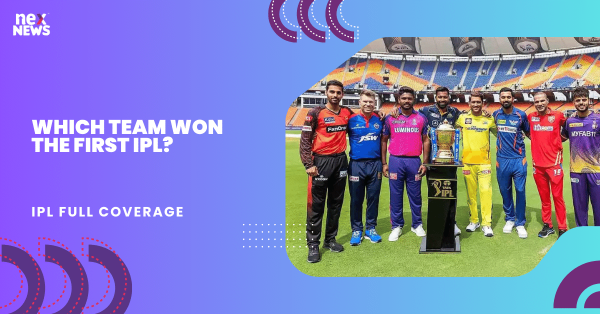Brief Overview of the Indian Premier League
The Indian Premier League (IPL) is a professional Twenty20 cricket league in India. It is one of the most popular and lucrative cricket tournaments in the world, attracting top players from around the globe. Since its inception in 2008, the IPL has revolutionized the way cricket is played and consumed, bringing together the best of cricketing talent and providing fans with an exhilarating and high-octane sporting spectacle.
Boasting a unique franchise-based model, the IPL brings together teams representing different cities in India. These teams are owned by individuals, business entities, and even celebrities, adding a touch of glamour to the tournament. With a lucrative television rights deal, corporate sponsorships, and a passionate fan following, the IPL has become a massive commercial success, providing players with unprecedented earnings and creating a platform for young talent to shine on a global stage. The IPL has not only redefined the economics of cricket but has also brought the game closer to its fans, with matches played in packed stadiums and broadcasted to millions of viewers worldwide.
Formation and Inception of the IPL
The formation of the Indian Premier League (IPL) can be traced back to a series of discussions and brainstorming sessions among cricket officials and business magnates in India. The idea was to create a professional domestic Twenty20 cricket league that would not only revolutionize the sport in the country but also attract top talent from around the world. The objective was to establish a tournament that would captivate not only cricket enthusiasts but also casual viewers, making it a lucrative property in terms of sponsorship and television rights.
In 2007, the Board of Control for Cricket in India (BCCI) unveiled their plans for the IPL, setting the stage for the league's inception. The BCCI's vision was to create a platform where players would be bought and sold via auctions, making the league distinct from traditional cricket formats. With the backing of high-profile individuals, including business magnates and Bollywood celebrities, the IPL quickly gained momentum. This resulted in the formation of the IPL governing council in 2008, which was tasked with overseeing the league's operations and ensuring its smooth functioning. The stage was set for the inaugural season of the IPL, which was all set to revolutionize cricket in India and beyond.
The Inaugural Season of the IPL
The inaugural season of the Indian Premier League (IPL) started on April 18, 2008, with a grand opening ceremony that showcased the finest talents in the cricketing world. The tournament, spanning across 44 days, captivated audiences with its unique combination of entertainment and high-octane cricket.
A total of eight teams participated in the first edition of the IPL, each representing a different city in India. These teams were a blend of international and domestic players, which added to the excitement and intrigue surrounding the tournament. The teams were carefully selected through an auction process, where franchise owners bid for players to form their squads. This innovative approach injected a sense of unpredictability and ensured that no team was guaranteed an easy victory.
Please note that the above paragraph serves as an introduction to the section on "The Inaugural Season of the IPL" and does not provide a definitive conclusion.
Participating Teams in the First IPL Edition
The inaugural season of the Indian Premier League (IPL) witnessed a total of eight participating teams vying for the coveted title. These teams were a combination of city-based franchises, each owned by prominent business tycoons, celebrities, or corporate organizations. The franchises were spread across different cities of India, adding a sense of regional pride and passion to the tournament.
The participating teams in the first IPL edition were Royal Challengers Bangalore (RCB), Kolkata Knight Riders (KKR), Chennai Super Kings (CSK), Delhi Daredevils (now known as Delhi Capitals), Kings XI Punjab (now known as Punjab Kings), Mumbai Indians (MI), Rajasthan Royals (RR), and Deccan Chargers (now replaced by Sunrisers Hyderabad). Each team possessed a unique identity, boasting a distinct blend of international stars, domestic talents, and emerging players. The range of team compositions generated immense excitement and anticipation among cricket enthusiasts across the nation. The stakes were high, as each team strove to establish its dominance and secure its place in the cricketing history of the IPL.
Format and Structure of the First IPL
The format and structure of the first edition of the Indian Premier League (IPL) was designed to be fast-paced and exciting, ensuring maximum entertainment for cricket fans. The tournament followed a round-robin format, where each team played against every other team twice in a home and away format. This meant that there were a total of 56 league matches played during the initial phase of the IPL.
To make the tournament more thrilling, the first IPL also introduced a concept called the "Strategic Timeout." This was a brief break of seven and a half minutes during each innings, where the teams could discuss tactics, regroup, and plan their strategies. This added an extra element of suspense and strategic planning, making the matches even more intriguing for both players and viewers alike. The aim was to create a fast-paced, action-packed tournament that would captivate audiences and take cricket to a whole new level.
The first IPL also witnessed the introduction of several other exciting elements to enhance the spectator experience. Innovations such as cheerleaders, music, and fireworks during matches added to the overall party-like atmosphere of the league. The matches were held in different cities across India, with teams representing various regions, giving fans a chance to cheer for their local favorites. Overall, the format and structure of the inaugural IPL set the stage for a successful and groundbreaking tournament that captured the imagination of cricket lovers worldwide.
